J uses a table to start, then calculates
NOTE! This is speculation, based on benchmarks (shown below).
If you want to quickly try for yourself, try the following:
p:1e8 NB. near-instant
p:1e8-1 NB. noticeable pause
The low points on the graph are where J looks up the prime in a table. After that, J is calculating the value from a particular starting point so it doesn't have to calculate the entire thing. So some lucky primes will be constant time (simple table lookup) but generally there's first a table lookup, and then a calculation. But happily, it calculates starting from the previous table lookup instead of calculating the entire value.
Benchmarks
I did some benchmarking to see how p: performs on my machine (iMac i5, 16G RAM). I'm using J803. The results are interesting. I'm guessing the sawtooth pattern in the time plots (visible on the 'up to 2e5' plot) is lookup table related, while the overall log-ish shape (visible on the 'up to 1e7' plot) is CPU related.
NB. my test script
ts=:3 : 0
a=.y
while. a do.
c=.timespacex 'p:(1e4*a)' NB. 1000 times a
a=.<:a
b=.c;b
end.
}:b
)
a =: ts 200
require'plot'
plot >0{each a NB. time
plot >1{each a NB. space
(p: up to 2e5)
time

space

(p: up to 1e7)
time

space

During these runs one core was hovering around 100%:

Also, the voc page states:
Currently, arguments larger than 2^31 are tested to be prime according to a probabilistic algorithm (Miller-Rabin).
And in addition to a prime lookup table as @Mauris points out, v2.c contains this function:
static F1(jtdetmr){A z;B*zv;I d,h,i,n,wn,*wv;
RZ(w=vi(w));
wn=AN(w); wv=AV(w);
GA(z,B01,wn,AR(w),AS(w)); zv=BAV(z);
for(i=0;i<wn;++i){
n=*wv++;
if(1>=n||!(1&n)||0==n%3||0==n%5){*zv++=0; continue;}
h=0; d=n-1; while(!(1&d)){++h; d>>=1;}
if (n< 9080191)*zv++=spspd(31,n,d,h)&&spspd(73,n,d,h);
else if(n<94906266)*zv++=spspd(2 ,n,d,h)&&spspd( 7,n,d,h)&&spspd(61,n,d,h);
else *zv++=spspx(2 ,n,d,h)&&spspx( 7,n,d,h)&&spspx(61,n,d,h);
}
RE(0); R z;
} /* deterministic Miller-Rabin */




